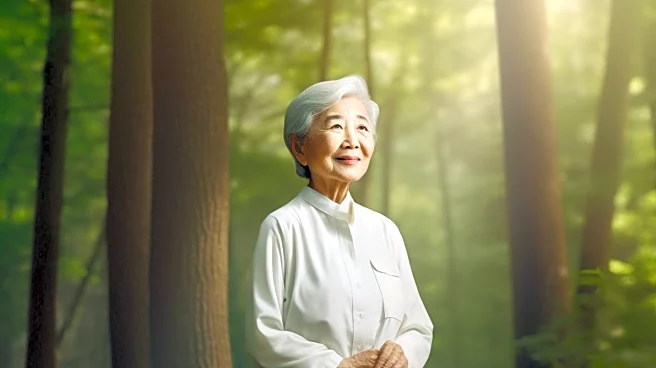What's Happening?
Recent research highlights the impact of lifestyle choices on biological age, suggesting that regular physical activity and healthier eating patterns can significantly slow down ageing. Studies indicate
that sedentary individuals who engage in an eight-week exercise program can reverse their biological age by approximately two years. Additionally, adopting a diet rich in fruits, vegetables, whole grains, nuts, legumes, fish, lean proteins, and healthy fats while reducing red meat, saturated fat, added sugars, and sodium can slow ageing by an average of 2.4 years. These lifestyle changes influence DNA methylation, a process that controls gene activity, thereby maintaining essential bodily functions for longer.
Why It's Important?
The findings underscore the potential for individuals to influence their longevity through lifestyle modifications. By reducing biological age, people can potentially extend their lifespan and improve their quality of life. This research is particularly relevant for those with chronic diseases and obesity, as healthier lifestyle choices can have a more pronounced effect on slowing ageing. The emphasis on physical activity and diet provides actionable steps for individuals seeking to enhance their health and longevity, highlighting the importance of preventive measures in public health strategies.
What's Next?
Further research may explore the specific mechanisms by which lifestyle changes affect biological age and identify additional factors that contribute to longevity. Public health initiatives could focus on promoting these lifestyle changes to reduce healthcare costs associated with age-related diseases. As awareness grows, individuals may increasingly adopt these practices, potentially leading to a societal shift towards healthier living.
Beyond the Headlines
The research also touches on the broader implications of lifestyle choices, including the impact of stress management, sleep quality, and social connections on ageing. These factors, along with environmental influences such as pollution and socioeconomic status, may play a role in determining biological age, suggesting a multifaceted approach to longevity.











